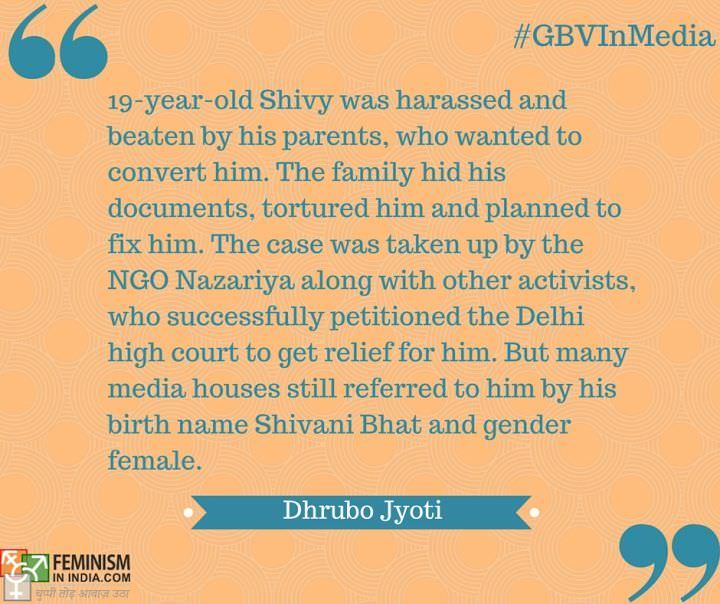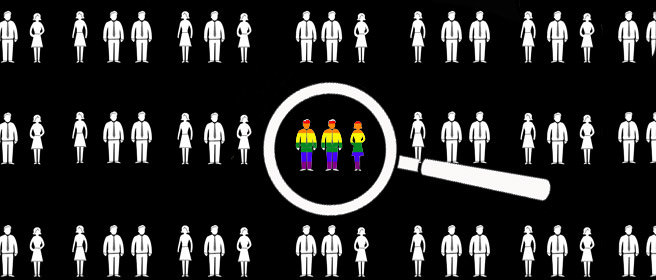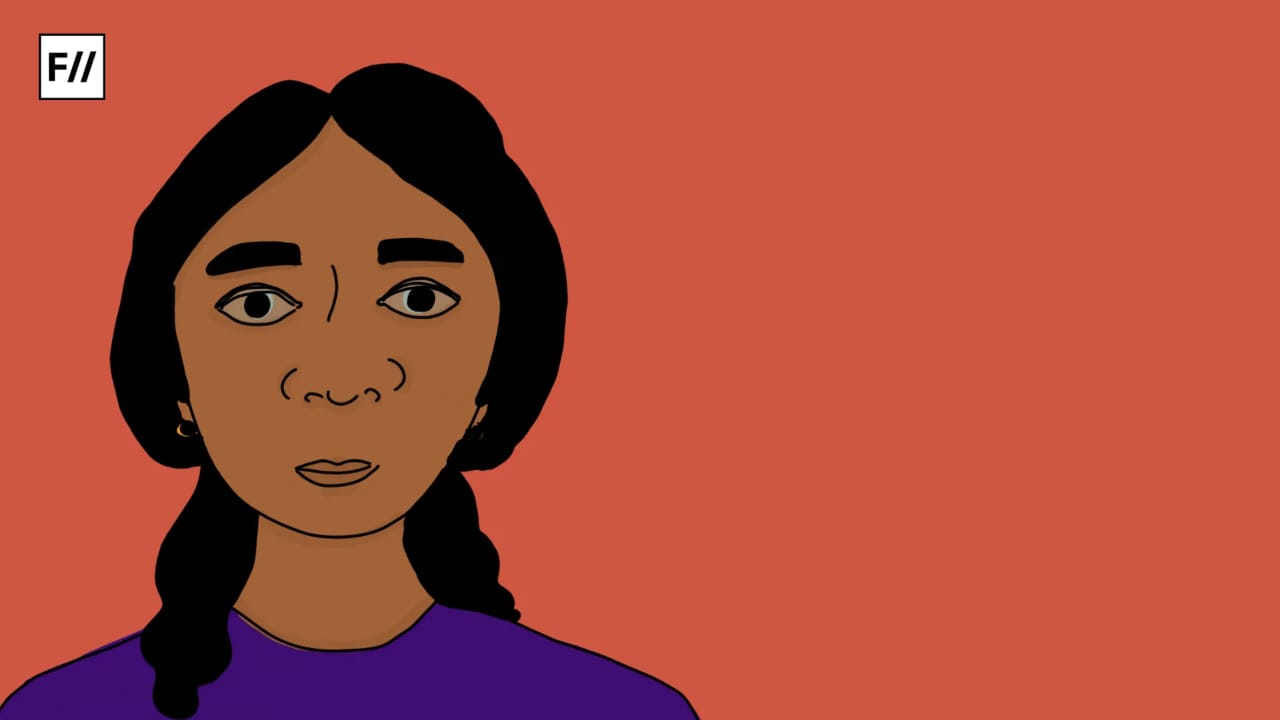This article is part of the #GBVInMedia campaign for the 16 Days Of Activism global campaign to end gender-based violence. #GBVInMedia campaign analysis how different kind of mainstream media (mis)represents/reports gender-based violence and broadens the conversation from violence against women to violence against people from the queer community, caste-based violence and violence against people with disabilities.
When Pravallika was brutally murdered in Hyderabad this year, the news barely made it to the national networks. The gruesome death was reported by local channels, dripping with salacious details that kept hinting how sex work had led to her death, repeatedly suggesting that her profession was responsible for her death, not her assaulters.
Three days after the murder, another hijra person was harassed by the police – she was forcibly stripped at the station, kept naked for several hours in the cold while being manhandled by security personnel. None of this made the pages of major English newspapers.
Pravallika’s case isn’t isolated. The same year saw several such rapes and assaults but none of them were deemed worthy enough of media coverage. The case of a trans* person being gang raped by cops inside an Ajmer police station was a rare exception, but only after the brave victims went to higher authorities.
Contrast this with the generally celebratory coverage of prides, film festivals or even advertisements – remember the wall-to-wall reportage of the Myntra ad – and one thing is clear. Violence against the most vulnerable sections of the LGBTQ community is not sexy or colourful enough for mainstream media, overdosing on the humdrum of politics or the glitz of Bollywood.
Several reasons contribute to this. Gender-based violence (GBV) is historically ignored by the media, partly because reporting it challenges traditional hierarchies that newspapers are loathe to, but also because the body-count logic that editors depend on, doesn’t usually work in such cases.
Most crime reports rely on the police as their primary source but this doesn’t work with GBV cases, especially with gender non-conforming and trans* persons, who remain so on the margins that the luxury of police complaints are denied to them.
Branded criminals and ridiculed for their occupations, appearance and lifestyle, assault victims often find it difficult to approach authorities, knowing that they’d possibly be raped and beaten at police station – similar to what happened to Pravallika’s friend.
As a result, the rape and murder of people from the LGBTQ community doesn’t enter the official records, and down the line, doesn’t get reported in media.
This gives rise to an ironic situation where the media – at least the English-language press – is mostly supportive of LGBTQ issues but maintains a complete silence on violence on the most vulnerable.
The reasons aren’t difficult to find. The glowing editorials extolling human rights arguments and the wall-to-wall coverage of prides and film festivals are catchy, they fulfill the 24-hour news cycle demands of exotic colour splashing to catch attention.

This is to not say that such coverage isn’t important – indeed, the change in attitude of especially the vernacular press has been key in changing the perception around the LGBTQ community. Channels such as TV9 which used to run sleazy homophobic sting operations that demonized homosexuality and outed unsuspecting individuals now hosts talk shows around section 377. Most channels have seen a surge in pro-LGBTQ coverage, especially around the Supreme Court decision in 2013.
But inherent puritanical attitude around class, caste or sex work continue to plague such coverage and empathetic reporting is often denied to those who don’t fall under the respectable category – those who are beggars, on the streets, homeless, HIV positive, genderqueer, lower caste or all of these.
Media continues to refer to trans/genderqueer persons by their names and genders assigned at birth – and some even insist that they do so as it is ‘legal’ – as if the identities we chose for ourselves are somehow less valid than what others choose for us.
But not all is lost. When a bright young person, Divya Roop, was assaulted by a group of men in Mumbai, a flurry of news reports helped in nailing the culprits by talking about a culture of bullying and violence that stalks LGBTQ community.
But such depiction is far and few in between. Many people from the LGBTQ community face GBV at homes by their families, especially by way of incarceration and bullying, but these cases never get reported because they remain within the “holy” confines of the parivar.
Take the case of 19-year-old Shivy, who was harassed and beaten by his parents, who wanted to convert him. The family hid his documents, tortured him and planned to fix him. The case was taken up by the NGO Nazariya along with other activists, who successfully petitioned the Delhi high court to get relief for him. But many media houses still referred to him by his birth name Shivani Bhat and gender female.
Gender-based violence has always been a blind spot for the mainstream media as it requires a dismantling of hierarchies present in the mind. But more egregious is the complete erasure of such brutality on LGBTQ bodies, be it by way of street harassment, sexual assault, abuse due to section 377, rape or murder. Many people from the LGBTQ community feel safe neither on the streets, nor in the custody of our law-enforcement personnel. It’s high time we change this.
Featured Image Credit: Newslaundry
About the author(s)
Xavier's. Bose Institute. ACJ. Works at Hindustan Times. Physics+Journalism make for a bad curry. Bengal fan. Mamata fanatic.




